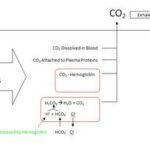What are Greenhouse Gases?
A greenhouse gas is a chemical compound found in the Earth’s atmosphere. Acting as gases, these compounds allow sunlight to enter the atmosphere freely. As sunlight strikes the Earth, some is re-radiated off the Earth’s surface and back towards space in the form of infrared radiation, or heat. This heat is absorbed by greenhouse gases and trapped in our atmosphere.
There have always been gases that exhibit greenhouse properties. Some of the greenhouse gases occur in nature such as water, vapor, carbon dioxide, methane and nitrous oxide. Others, specifically industrial gases, are man made. To keep the Earth’s temperature constant, the amount of energy Earth receives from the sun should be relatively close to the amount of energy radiated off Earth’s surface back into space.
Why are Greenhouse Gas Levels Increasing
The Industrial Revolution was a turning point for our society in many ways. With industry we saw the growth of our economy paralleled by the increase in the level of greenhouse gas emissions. Several greenhouse gases have increased by approximately 25 percent in the last 150 years. Anthropogenic emissions are those caused by man. In the last two decades, almost 75 percent of these anthropogenic emissions come from the burning of fossil fuels. (need I remind you, fossil fuels are not a renewable energy source!) These anthropogenic emissions have escalated the concentration of carbon dioxide in Earth’s atmosphere.
How Do Greenhouse Gases Affect Climate Change
As concentrations of greenhouse gases rise, the average surface temperature of the Earth increases over time. The Earth’s rising temperature produces a change in weather patterns and sea levels. This is known as climate change.
Reportedly, the Earth’s climate has increased between 0.6 and 0.9 degrees over the past century. This increase is attributed to human activity.
What are the Sources of Greenhouse Gases
The primary source of greenhouse gas emissions in the US is the combustion of fossil fuels in energy use. (Again, fossil fuels are not a renewable energy source). The demand for energy is driven by economic growth. Weather patterns affecting heating and cooling use and fuel used in electricity generation creates short term fluctuation on energy demands as well.
Carbon dioxide emissions that are energy related are a result of the combustion of petroleum, coal, and natural gas. Of the total anthropogenic gas emissions produced by the US, 82 percent were energy related.
Other Greenhouse gases
The following numbers were taken for the Energy Information Administration, Emissions of Greenhouse Gases in the United States 2006 (Washington, D.C. November 2007).
Energy related carbon dioxide gas emissions are 82.3 percent of the United States anthropogenic greenhouse gas emissions. Other contributing anthropogenic gases are as follows:
Methane – 8.6 percent. This greenhouse gas comes from landfills, coal mines, oil and natural gas operations and agriculture.
Nitrous oxide – 5.4 percent. This is emitted through the use of nitrogen fertilizers, from burning fossil fuels and from certain industrial and waste management processes.
Miscellaneous – 2.2 percent. This category includes several man made gases, including hydrofluorocarbons (HFC), perfluorocarbons (PFC) and sulfur hexafluoride (SF6) that are released as byproducts of industrial processes and through leakage.
Note: Since the Energy Information Administrations report, it has been reported that nitrogen trifluoride is of rising concern. This man made gas was thought to be a replacement for perfluorocarbons. It was reported in October 2008 that the greenhouse gases it emits had been grossly understated and should be cause for future concern.
What can we do to reduce greenhouse gas emissions
We need to stop our reliance on energy produced by fossil fuels. These are a non-renewable source of energy that continue to emit anthropogenic greenhouse gases into the atmosphere. Alternative sources of energy must be sought out to replace our dependency on fossil fuels.
Solar and wind power are renewable energy sources that can be immediately implemented. The electricity you currently purchase through your electric company is generated by the burning of fossil fuel. Converting to solar or wind power is simple enough. The payout is immense. Not only will you be making a contribution to the reduction of greenhouse gas emissions, you will see a 80 percent or more drop in your electric bills.


